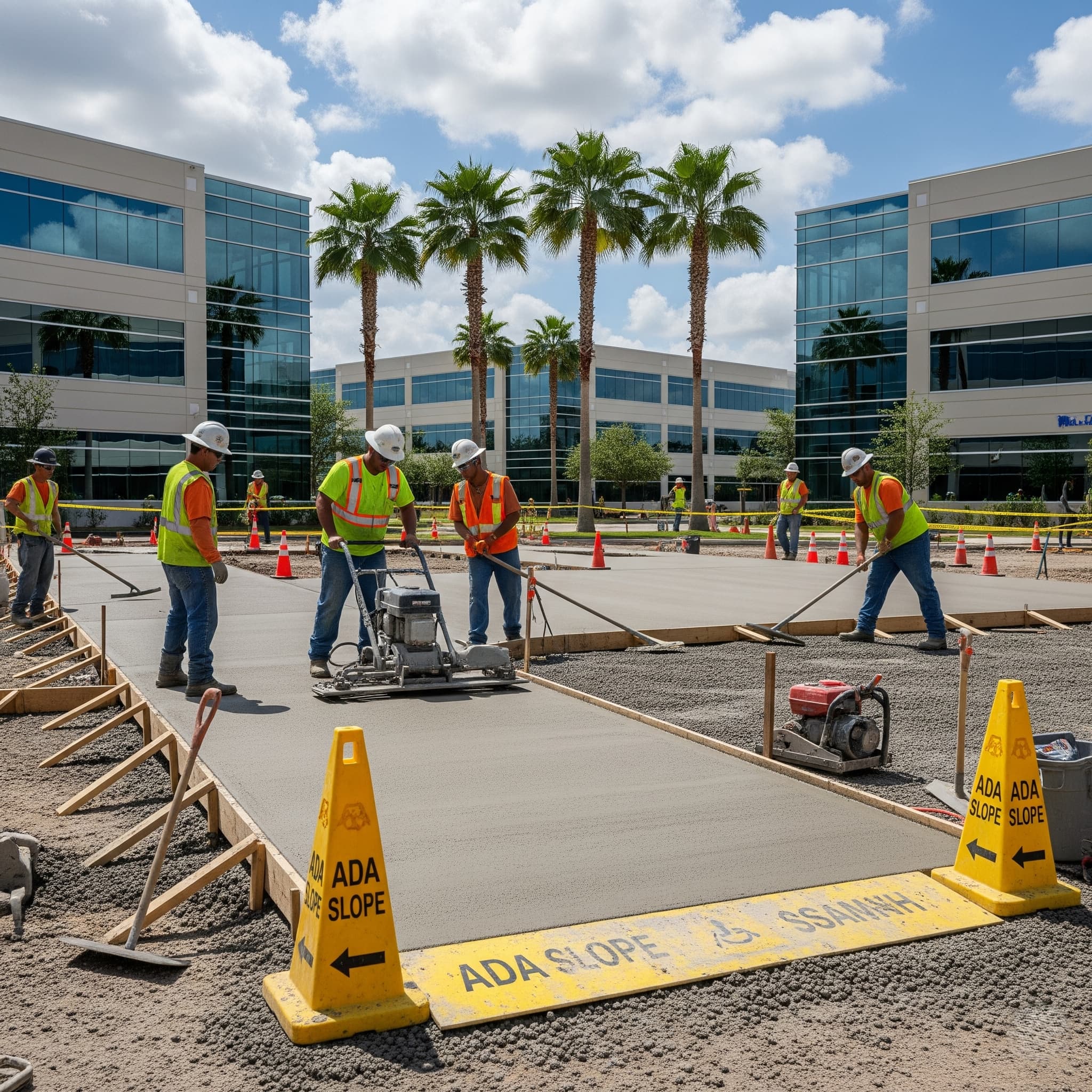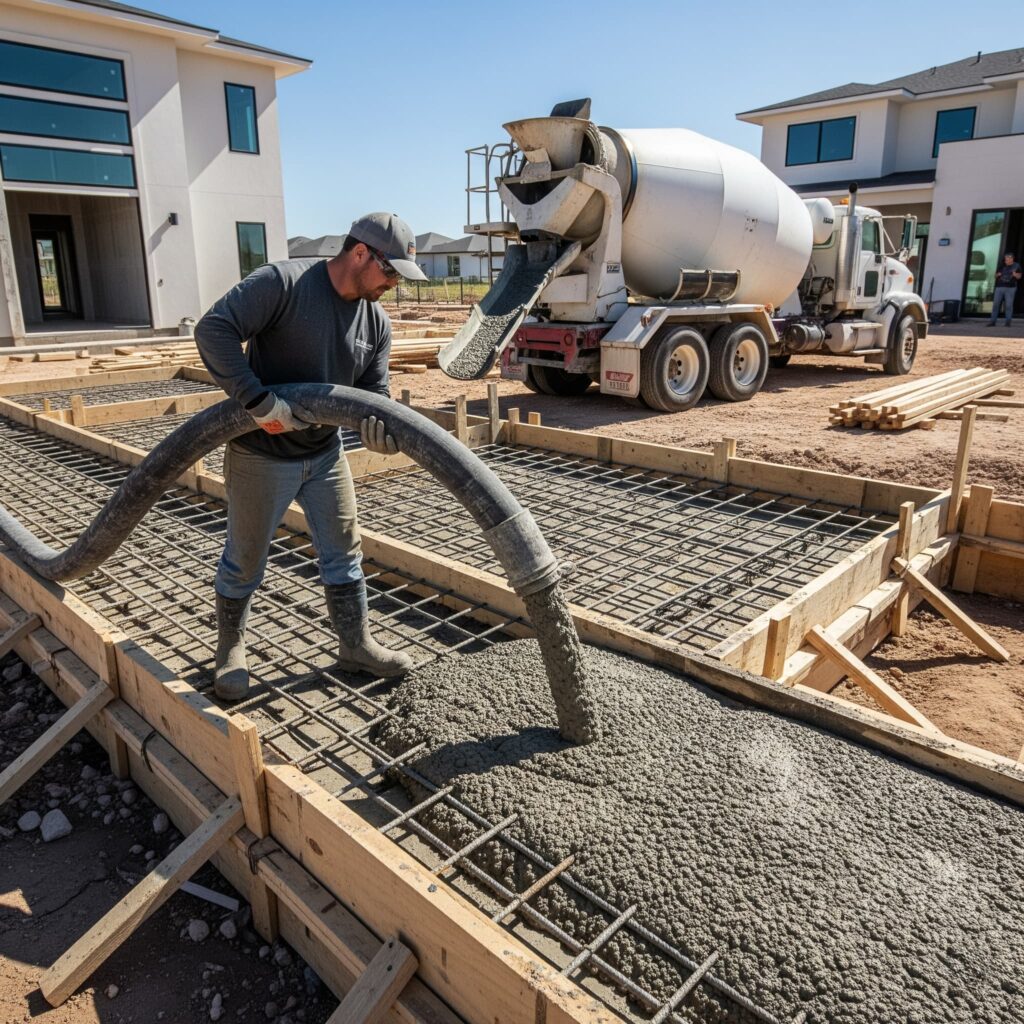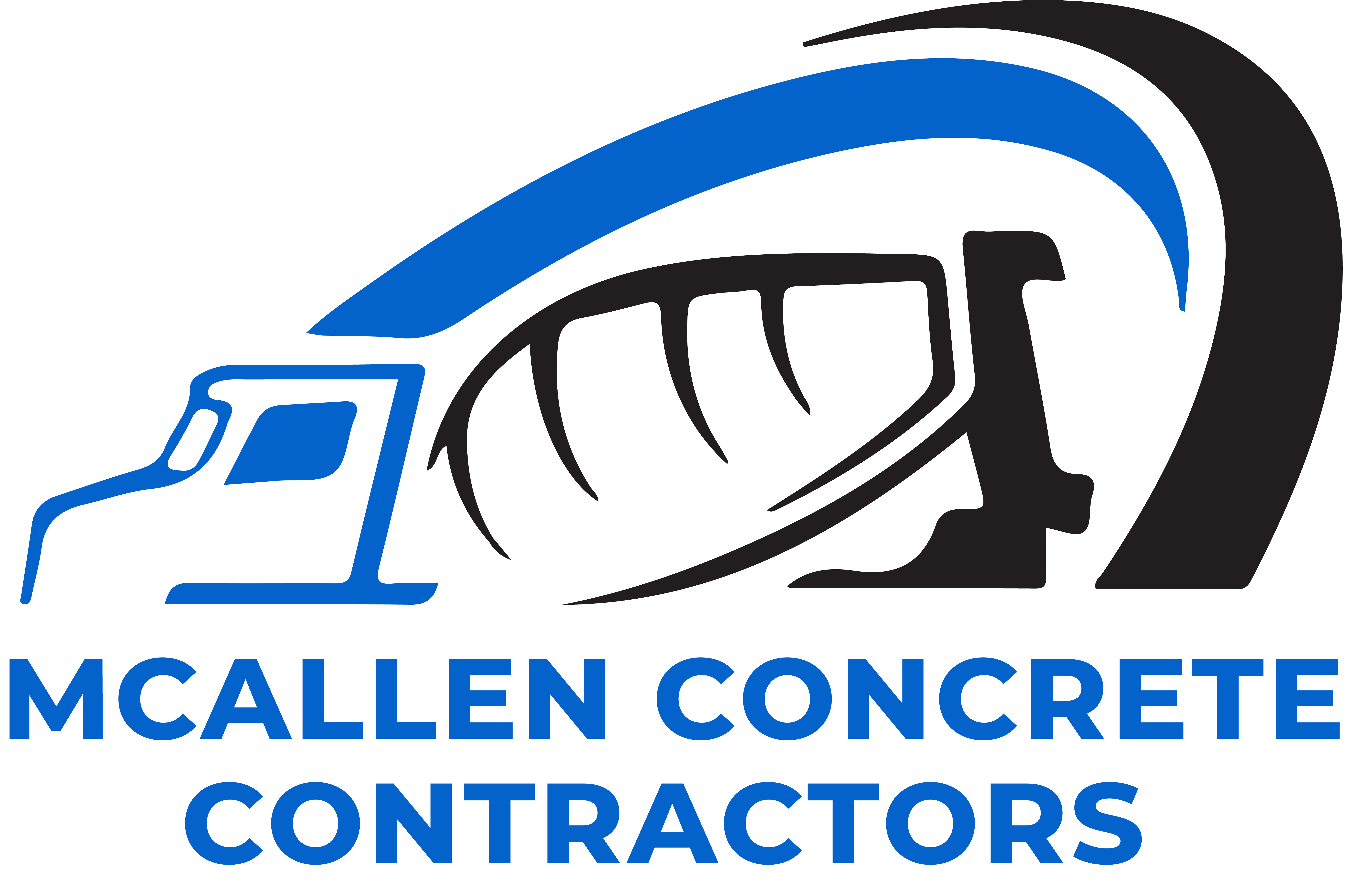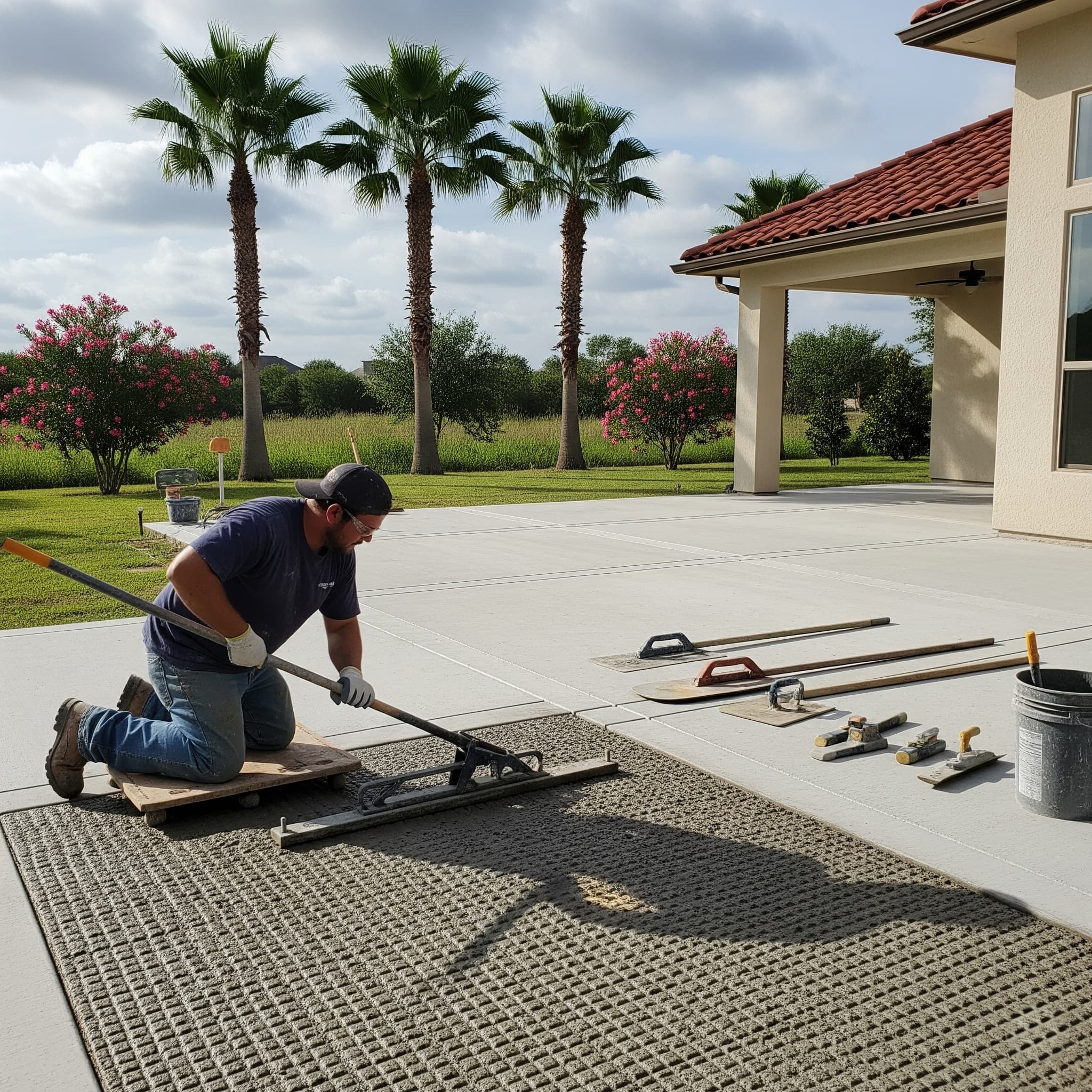
Pouring Concrete in McAllen: Mix & Reinforcement Tips
Pouring Concrete McAllen
Successful concrete projects depend on selecting appropriate mix designs and reinforcement systems that meet specific structural requirements. Professional pouring concrete techniques combine precise material ratios with strategic reinforcement placement to achieve optimal strength and durability. Understanding concrete mix ratios, reinforcement options, and proper installation methods ensures your McAllen construction project meets or exceeds performance expectations. Whether you’re building residential foundations, commercial slabs, or decorative surfaces, the right combination of materials and techniques creates lasting value. Each project requires careful analysis of load requirements, environmental conditions, and desired performance characteristics to determine the most suitable approach.

Understanding Concrete Mix Fundamentals
Concrete consists of four primary components: cement, sand (fine aggregate), gravel or stone (coarse aggregate), and water. The proportions of these materials determine the concrete’s final strength, workability, and durability characteristics. Standard concrete mix design follows established ratios, with the most common being 1:2:4 (cement:sand:coarse aggregate) for general-purpose applications.
Cement serves as the binding agent, typically comprising 10-15% of the total mix volume. Portland cement remains the most widely used type, providing excellent strength development and chemical resistance. Sand fills voids between larger aggregates while contributing to workability and finishing characteristics. Coarse aggregate provides the structural backbone, contributing significantly to compressive strength.
Water activates the cement’s binding properties through hydration, but excess water weakens the final product. The water-cement ratio directly impacts concrete strength, with lower ratios producing higher-strength concrete. However, adequate water content ensures proper workability for placement and consolidation.
Concrete Strength Grades
Different applications require specific concrete strength grades, measured in pounds per square inch (PSI) after 28 days of curing. Residential applications typically use 2,500 to 4,000 PSI concrete, while commercial projects may require 4,000 to 6,000 PSI or higher. Foundation walls generally need 3,000 PSI minimum, while driveways and sidewalks perform well with 3,500 PSI concrete.
Mix design calculations consider the target strength plus safety factors to ensure reliable performance. Professional concrete mix design incorporates statistical analysis to account for material variations and testing procedures, ensuring consistent results across multiple batches.
Reinforcement Systems Comparison
Concrete reinforcement options have evolved significantly, offering various solutions for different applications. Traditional steel rebar, welded wire mesh, and modern fiber reinforcement each provide distinct advantages depending on project requirements. Understanding these concrete reinforcement options helps contractors and homeowners make informed decisions.
Steel rebar remains the gold standard for structural applications requiring maximum tensile strength. Rebar effectively transforms concrete from a compression-only material into a composite that handles both compression and tension forces. Proper rebar placement at mid-depth positioning provides optimal performance while preventing surface staining.
Wire mesh offers excellent crack control for slabs and horizontal surfaces. This reinforcement distributes loads across larger areas while remaining more economical than individual rebar installation. Wire mesh works particularly well for residential driveways, patios, and warehouse floors.
Fiber Reinforcement Advantages
Modern fiber reinforcement technology provides numerous benefits over traditional steel systems. Synthetic fibers mixed directly into concrete create three-dimensional reinforcement throughout the entire structure, not just at specific depths. These fibers significantly reduce plastic shrinkage cracking while improving impact resistance and durability.
Fiber mesh vs rebar comparisons show fibers excel in freeze-thaw resistance, particularly important in varying climate conditions. Unlike steel reinforcement, fibers won’t corrode or create rust stains, making them ideal for decorative concrete applications. Installation proves faster and more economical since fibers integrate during mixing rather than requiring separate placement operations.
Different fiber types serve specific purposes. Polypropylene microfibers control plastic shrinkage cracking, while macro synthetic fibers provide post-crack structural support. Steel fibers offer maximum strength enhancement but may show surface exposure in certain finishing operations.
Proper Mix Design Selection
Concrete mix design methodology follows American Concrete Institute (ACI) standards, ensuring optimal performance for intended applications. Professional design begins with determining target strength requirements, then calculates component proportions to achieve those goals while maintaining workability and economy.
Slump requirements affect water content and admixture selection. Higher slump concrete flows more easily but may sacrifice some strength. Typical slump ranges from 3-6 inches for most applications, with 4 inches being common for residential work. Air entrainment becomes crucial in freeze-thaw environments, improving durability through controlled microscopic air bubbles.
Aggregate selection impacts both strength and economy. Larger maximum aggregate sizes typically reduce cement requirements and costs while potentially increasing strength. However, aggregate size limitations exist based on reinforcement spacing and structural dimensions. Well-graded aggregates produce more workable mixes with better finishing characteristics.
Environmental Considerations
McAllen’s subtropical climate requires specific mix adjustments for optimal performance. Hot weather concreting demands careful attention to mixing water temperature, placement timing, and curing procedures. High temperatures accelerate hydration, potentially reducing working time and final strength if not properly managed.
Humidity levels affect surface finishing and curing rates. Concrete curing process management becomes critical in maintaining proper moisture levels for complete hydration. Curing compounds, wet burlap, or plastic sheeting help retain moisture during the crucial early hydration period.
Installation Techniques and Best Practices
Professional concrete pouring techniques ensure proper placement, consolidation, and finishing. Preparation begins with subgrade evaluation and proper base material installation. Adequate compaction and moisture control prevent settlement and cracking issues later.
Forms must be properly aligned, braced, and sealed to prevent leakage during placement. Release agents facilitate easy removal while preventing surface bonding. Reinforcement placement requires accurate positioning with adequate concrete cover to prevent corrosion and ensure proper bonding.
Concrete placement should proceed systematically to avoid cold joints and ensure uniform consolidation. Vibration removes air voids and ensures intimate contact between concrete and reinforcement. Over-vibration can cause segregation, while under-vibration leaves voids that weaken the structure.
Quality Control Measures
Testing procedures verify the mix performance throughout the placement process. Slump tests confirm consistency and workability, while air content testing ensures proper entrainment levels. Cylinder samples provide strength verification at specified ages, typically 7 and 28 days.
Temperature monitoring prevents thermal cracking in mass concrete applications. Proper curing temperature and humidity control optimize strength development and durability. Documentation of all testing and procedures provides quality assurance records for future reference.
Economic and Performance Considerations
Cost-effective concrete design balances material costs with performance requirements. Higher-strength mixes cost more initially but may reduce thickness requirements or extend service life. Reinforcement selection significantly impacts both material and labor costs.
Rebar installation requires skilled labor and careful coordination but provides maximum structural capacity. Wire mesh offers middle-ground economics with good performance for many applications. Fiber reinforcement minimizes labor requirements while providing excellent crack control and durability benefits.
Life-cycle cost analysis considers initial construction costs plus long-term maintenance requirements. Proper mix design and reinforcement selection minimize repair needs while maximizing service life, providing better overall value despite potentially higher initial costs.
Troubleshooting Common Issues
Understanding potential problems helps prevent costly mistakes and ensures successful outcomes. Segregation occurs when mixed proportions are improper or when placement techniques are inadequate. Bleeding results from excess water or inadequate fine aggregate content, causing weak surface layers.
Cracking problems stem from various causes, including inadequate reinforcement, poor curing practices, or excessive shrinkage. Plastic shrinkage cracks form during initial curing when surface moisture evaporates faster than it can be replaced. Proper curing and fiber reinforcement effectively prevent these issues.
Surface defects like scaling or dusting indicate improper finishing techniques or poor concrete quality. Working water to the surface during finishing weakens the top layer, making it susceptible to wear and weathering damage.
Professional Installation Benefits
Professional installation ensures optimal results through proper material selection, mixing procedures, and placement techniques. Experienced contractors understand local conditions, building requirements, and performance expectations that affect project success.
Quality control procedures, proper equipment usage, and skilled craftsmanship prevent common problems while maximizing concrete performance. Professional installation typically includes warranties covering both materials and workmanship, providing long-term protection for your investment.
Access to commercial-grade materials, testing equipment, and specialized tools enables professionals to achieve superior results compared to DIY approaches. Proper insurance coverage and licensing provide additional protection throughout the construction process.
Our experienced team combines decades of concrete expertise with a commitment to quality results on every project. From initial consultation through final inspection, McAllen Concrete Contractors ensures your concrete project meets the highest standards for performance, durability, and aesthetic appeal. Professional installation maximizes your project’s success through proper material selection and skilled craftsmanship.



